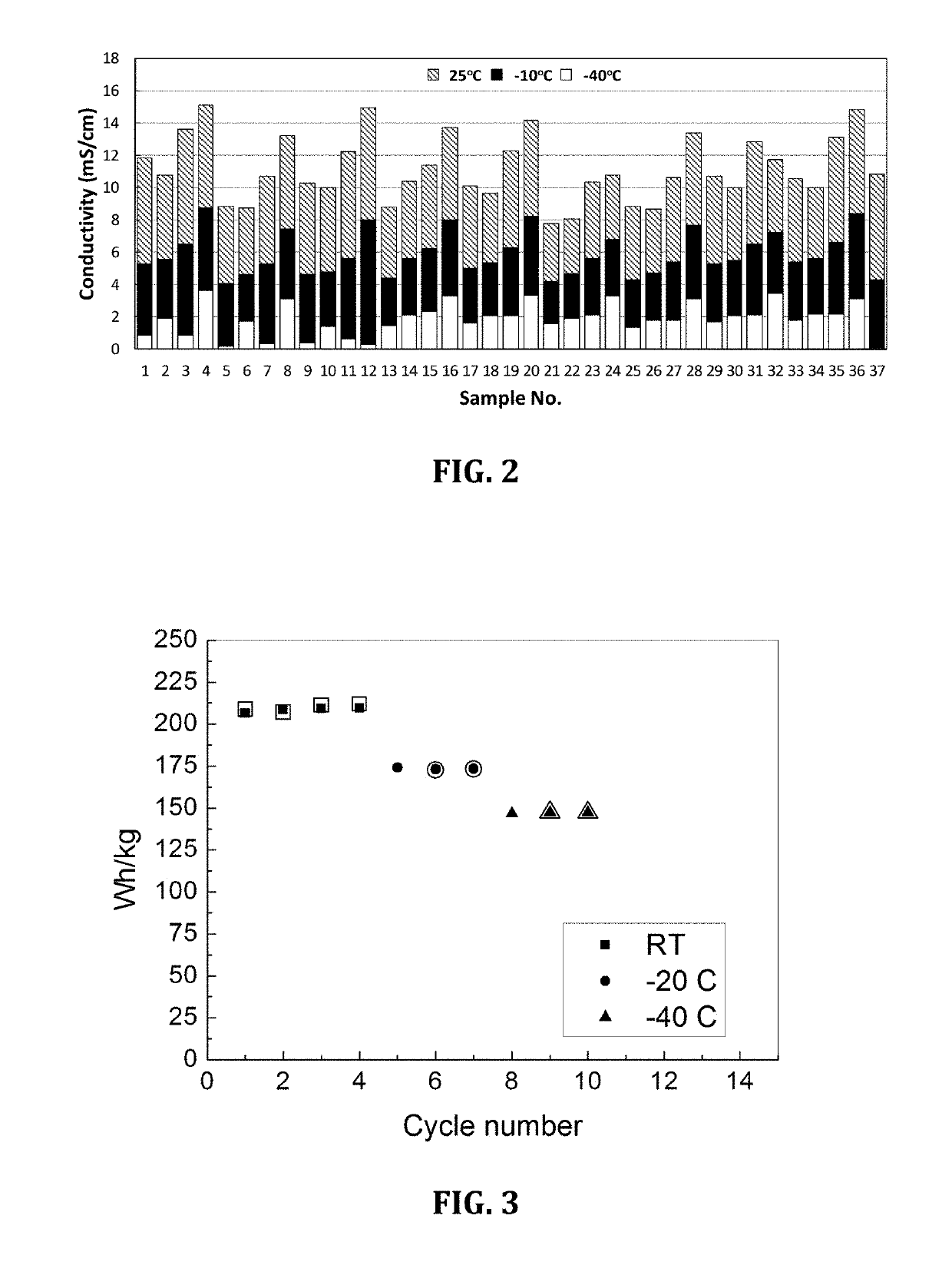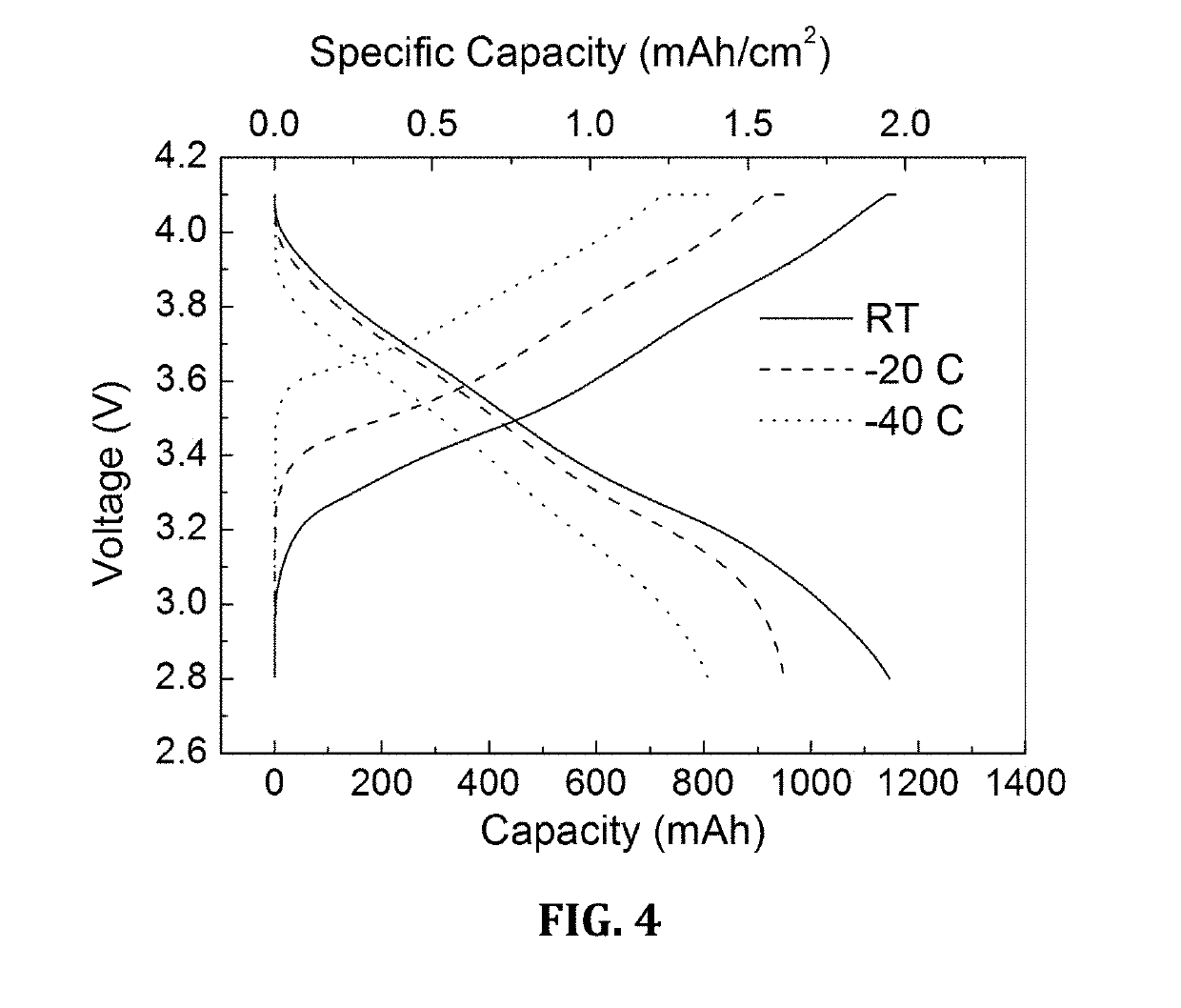Rechargeable electrochemical lithium ion cell
a lithium ion battery and electrochemical technology, applied in secondary cells, electrochemical generators, cell components, etc., can solve the problems of poor electrolyte conductivity, poor performance of lithium ion rechargeable cells at low temperatures, and sluggish charge transfer kinetics, etc., to achieve high energy density and high performance.
- Summary
- Abstract
- Description
- Claims
- Application Information
AI Technical Summary
Benefits of technology
Problems solved by technology
Method used
Image
Examples
Embodiment Construction
[0018]An application example of the present disclosure is presented with detailed description and references to the attached drawings.
[0019]As shown in FIG. 1, an electrochemical lithium ion cell is comprised of the following elements:
[0020]At least one thin metal foil (1) that serves as current collector for the anode. The thin metal foil (1) can be made either from copper or other metal.
[0021]Microcrystalline or amorphous silicon film (2) formed in granular and / or columnar structure which has been deposited at least on one of the two sides of the thin metal foil (1) by techniques such as Physical Vapor Deposition (PVD), Chemical Vapor Deposition (CVD), spin coating, spray pyrolysis or others similar techniques. The anode material (2) should provide a high active surface with high specific capacity in lithium, higher than 1500 mAh / g.
[0022]Electrolyte (3) consisting of lithium hexafluorophosphate (LiPF6) in a non-aqueous organic solvent. The non-aqueous organic solvent is composed o...
PUM
| Property | Measurement | Unit |
|---|---|---|
| temperatures | aaaaa | aaaaa |
| temperature capacity | aaaaa | aaaaa |
| temperature capacity | aaaaa | aaaaa |
Abstract
Description
Claims
Application Information
 Login to View More
Login to View More - R&D
- Intellectual Property
- Life Sciences
- Materials
- Tech Scout
- Unparalleled Data Quality
- Higher Quality Content
- 60% Fewer Hallucinations
Browse by: Latest US Patents, China's latest patents, Technical Efficacy Thesaurus, Application Domain, Technology Topic, Popular Technical Reports.
© 2025 PatSnap. All rights reserved.Legal|Privacy policy|Modern Slavery Act Transparency Statement|Sitemap|About US| Contact US: help@patsnap.com



